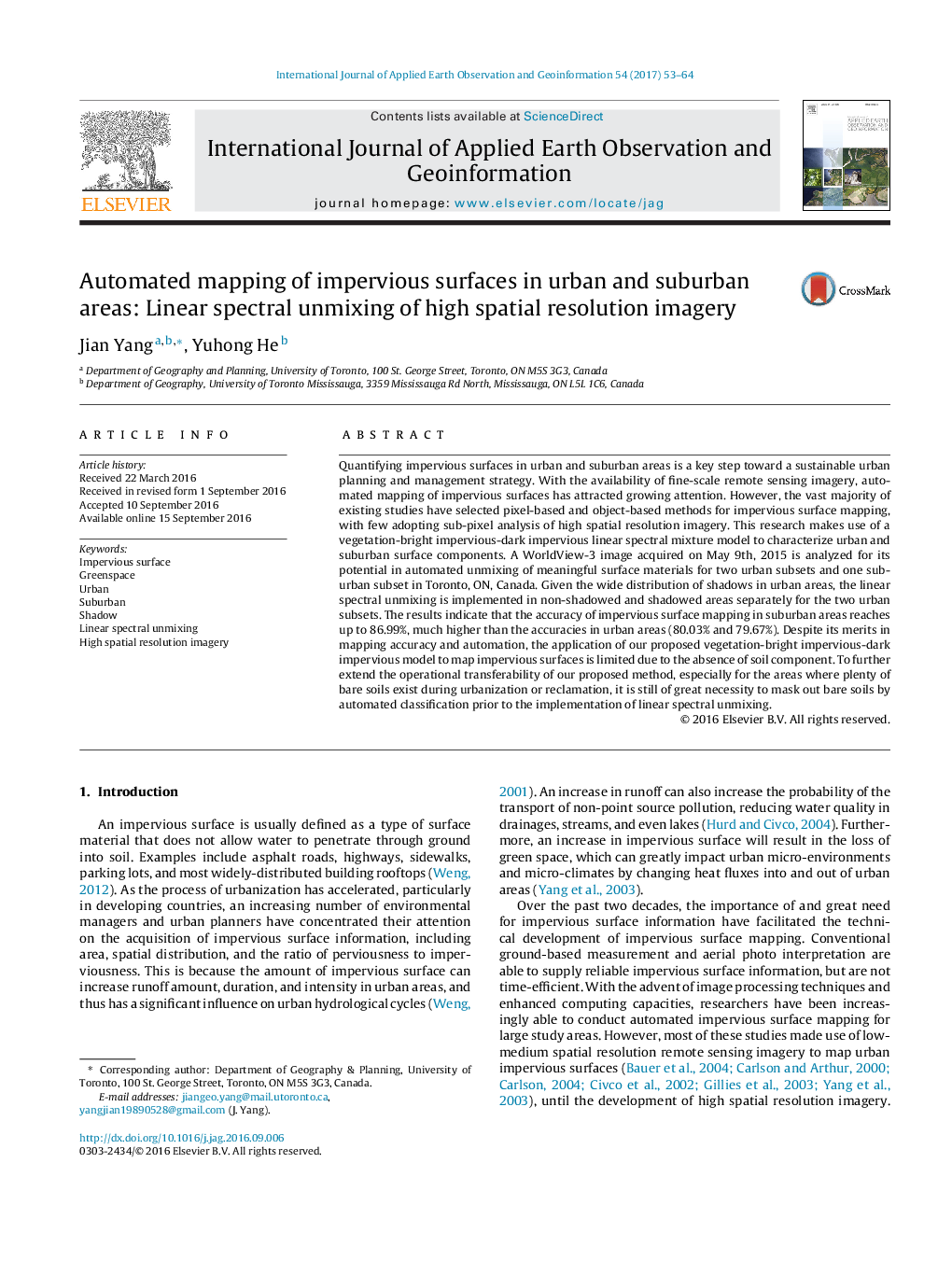| کد مقاله | کد نشریه | سال انتشار | مقاله انگلیسی | نسخه تمام متن |
|---|---|---|---|---|
| 6348424 | 1621803 | 2017 | 12 صفحه PDF | دانلود رایگان |
- Linear spectral unmixing was used for automated mapping of impervious surfaces.
- Spectral unmixing was implemented in high spatial resolution multispectral imagery.
- Impervious surfaces were mapped from non-shadowed and shadowed areas, respectively.
- Accuracies of impervious surface mapping were compared in urban and suburban areas.
Quantifying impervious surfaces in urban and suburban areas is a key step toward a sustainable urban planning and management strategy. With the availability of fine-scale remote sensing imagery, automated mapping of impervious surfaces has attracted growing attention. However, the vast majority of existing studies have selected pixel-based and object-based methods for impervious surface mapping, with few adopting sub-pixel analysis of high spatial resolution imagery. This research makes use of a vegetation-bright impervious-dark impervious linear spectral mixture model to characterize urban and suburban surface components. A WorldView-3 image acquired on May 9th, 2015 is analyzed for its potential in automated unmixing of meaningful surface materials for two urban subsets and one suburban subset in Toronto, ON, Canada. Given the wide distribution of shadows in urban areas, the linear spectral unmixing is implemented in non-shadowed and shadowed areas separately for the two urban subsets. The results indicate that the accuracy of impervious surface mapping in suburban areas reaches up to 86.99%, much higher than the accuracies in urban areas (80.03% and 79.67%). Despite its merits in mapping accuracy and automation, the application of our proposed vegetation-bright impervious-dark impervious model to map impervious surfaces is limited due to the absence of soil component. To further extend the operational transferability of our proposed method, especially for the areas where plenty of bare soils exist during urbanization or reclamation, it is still of great necessity to mask out bare soils by automated classification prior to the implementation of linear spectral unmixing.
Journal: International Journal of Applied Earth Observation and Geoinformation - Volume 54, February 2017, Pages 53-64
